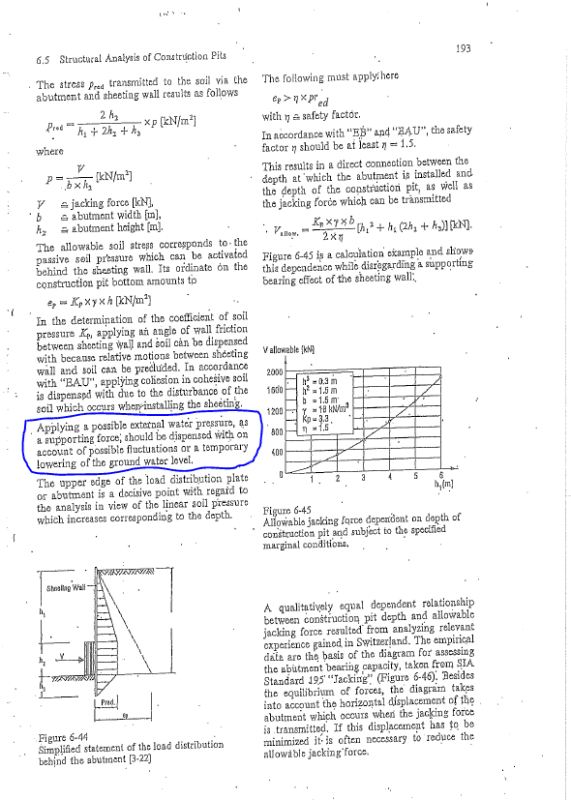We are designing a secant pile shaft that's about 100ft deep. The contractor will use it to launch a tunnel boring machine for a tunneling project. The TBM will use hydraulic jacks to advance casing in the soil. Max loads applied is 2000 kips. We are checking various components of our shaft as a result of this jacking load.
One of the engineers in my office wants to use soil pressure (static) + hydrostatic behind the secant piles to resist the jacking loads. The hydrostatic pressure is about 50% of the total resisting force.
I contend that the hydrostatic load cannot be used to resist the force from the TBM. I fully agree that the shaft itself sees the hydrostatic loads (it's a closed, sealed, rigid structure). But, if I take the shaft and put it in a bathtub, it can just float around with no apparent resistance (some, but you get the idea). Meanwhile, the shaft still sees the full hydrostatic load. It's not until you add dirt to the bathtub that the shaft gets stuck and now has to overcome resistance from the earth. The soil is a spring, the water is not. At least that's my $0.02.
Thoughts?
One of the engineers in my office wants to use soil pressure (static) + hydrostatic behind the secant piles to resist the jacking loads. The hydrostatic pressure is about 50% of the total resisting force.
I contend that the hydrostatic load cannot be used to resist the force from the TBM. I fully agree that the shaft itself sees the hydrostatic loads (it's a closed, sealed, rigid structure). But, if I take the shaft and put it in a bathtub, it can just float around with no apparent resistance (some, but you get the idea). Meanwhile, the shaft still sees the full hydrostatic load. It's not until you add dirt to the bathtub that the shaft gets stuck and now has to overcome resistance from the earth. The soil is a spring, the water is not. At least that's my $0.02.
Thoughts?

